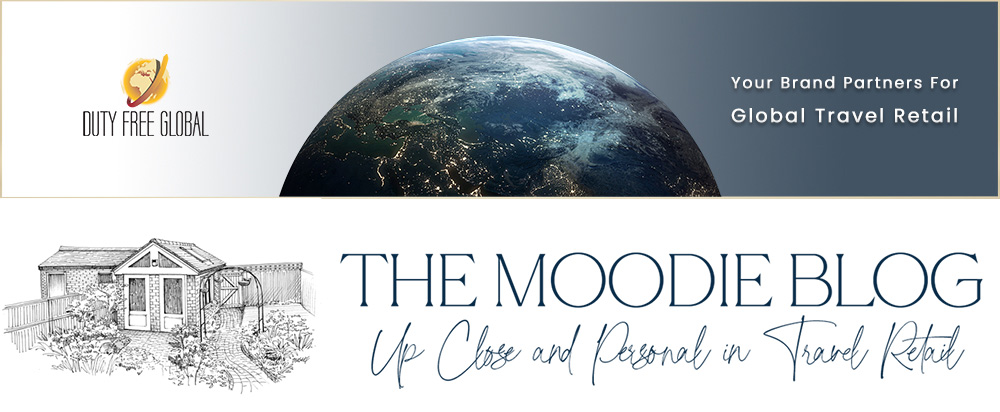Latest posts by Martin Moodie (see all)
- How I overcame Severe Tire Damage to become the oldest influencer in town - April 20, 2024
- Free as a (Kiwi) bird and flying high in Haikou - April 13, 2024
- Discovering Food Accademia’s world of fine flavours at a Hong Kong cha chaan teng - April 6, 2024
I’m on a Wine Goose Chase at Dublin Airport.
Surely I mean Grey Goose (as in the vodka), or Wild Geese (as in the Irish whiskey)?
Nope, for while returning to London through Dublin Airport Terminal 1 after the recent Dubai Duty Free Irish Derby, I came across one of the most novel takes on the wine category I have encountered.
If I could have a Dollar for every time I have said airport retailers should make more of their country’s wine heritage I would be a wealthy man. But in all those cases I was talking about wine-producing countries. At Dublin Airport’s ‘The Loop’ shopping zone, Aer Rianta International has come up with a brilliant twist on the theme of wine heritage by promoting those wines with Irish links.
As the son of a Dublin emigrant to New Zealand, I have always been fascinated by the subject of the Irish diaspora (Diaspóra na nGael). Almost 10 million people born in Ireland have emigrated since 1700, more than Ireland’s population at its peak in the 1840s.
Ireland even has a Minister of State for the Diaspora (the word diaspora refers to the movement, often forced by economics, religion or racism, of a population from its original homeland, to settle on a scattered international basis).
The seminal work on the Irish diaspora was given to me by Galwayman Colm McLoughlin, better known as the Executive Vice Chairman of Dubai Duty Free. It is called The Great Hunger and is written, perversely, by an Englishwoman, Cecil [correct name] Woodham-Smith (if you didn’t know who the Trevelyan is in the line ‘for you stole Trevelyan’s corn’ in the anthemic Fields of Athenry – and I know many young Irish people who shamefully do not – you certainly will after reading this searing book about what many, though not Woodham-Smith, consider a genocide as much as a famine).

The term Wild Goose or, in its plural form, has become synonymous with the Irish diaspora. In researching this Blog I discovered that the original Wild Geese comprised 30,000 Irish soldiers who left Ireland after the Treaty of Limerick in 1691, believing they had negotiated a treaty that guaranteed the rights of their people.
As a condition of the agreement they were exiled to France. But after they left their homeland the Treaty was ripped up and replaced by the Penal Laws. These stripped Irish Catholics of their land and removed all citizenship rights. For over a century the French army would include an Irish brigade, fed by a stream of young Irishmen.
I digress, though I think importantly so. The Wine Goose Chase is an ingenious collection of wines with Irish heritage. And you know, I was absolutely delighted to see that the wine on high-profile promotion was from New Zealand. And there lies a story within a story within a story, one I wrote about many years ago on this Blog.
The display signage for the Wine of the Month promotion for Hunter’s notes: “When Irishman Ernie Hunter arrived in New Zealand in 1979, Marlborough had not even been considered as a wine growing region.” The text [which by the way needs a good proof read -Ed] goes on to say that within five years he was producing award-winning wines and that the winery is now headed by Jane Hunter (below), described as “the most-awarded woman in the New Zealand wine industry”.

That’s true. It’s also a tiny proportion of the real story, one that holds particular resonance for me. The first article I ever wrote for publication (for a New Zealand consumer title called ‘Wineglass’) was an interview with Ernie about the wine offer he was featuring at his inner-city hotel in Christchurch, long before he turned from publican to winemaker.

Tragically, five years after his first vintage, Ernie was killed in a car crash – just one year after Hunter’s surprised the wine world by winning The Sunday Times Vintage Festival in the UK with an oak-aged Sauvignon Blanc. That success is widely considered as a seminal moment in the international acceptance of Marlborough Sauvignon Blanc, now one of the world’s most popular wine styles.
As I noted in my earlier Blog, Ernie’s death happened just after I arrived in the UK, where I was by now eeking out a living as a part-time wine writer. It was an appalling tragedy but not the end of the Hunter dream. His wife Jane took over the reins and has built the label into one of the truly great names in New Zealand wine. How very good to see them in my mother’s home town of Dublin. Ernie would be proud. A Hunter become a Wild Goose.



Footnote: There’s plenty else to admire about Dublin Airport Terminal 1 too, from ARI’s impressively diverse The Loop offer to an eclectic and often excellent food & beverage offer, highlighted by the outstanding Irish food court, Marqette.



























